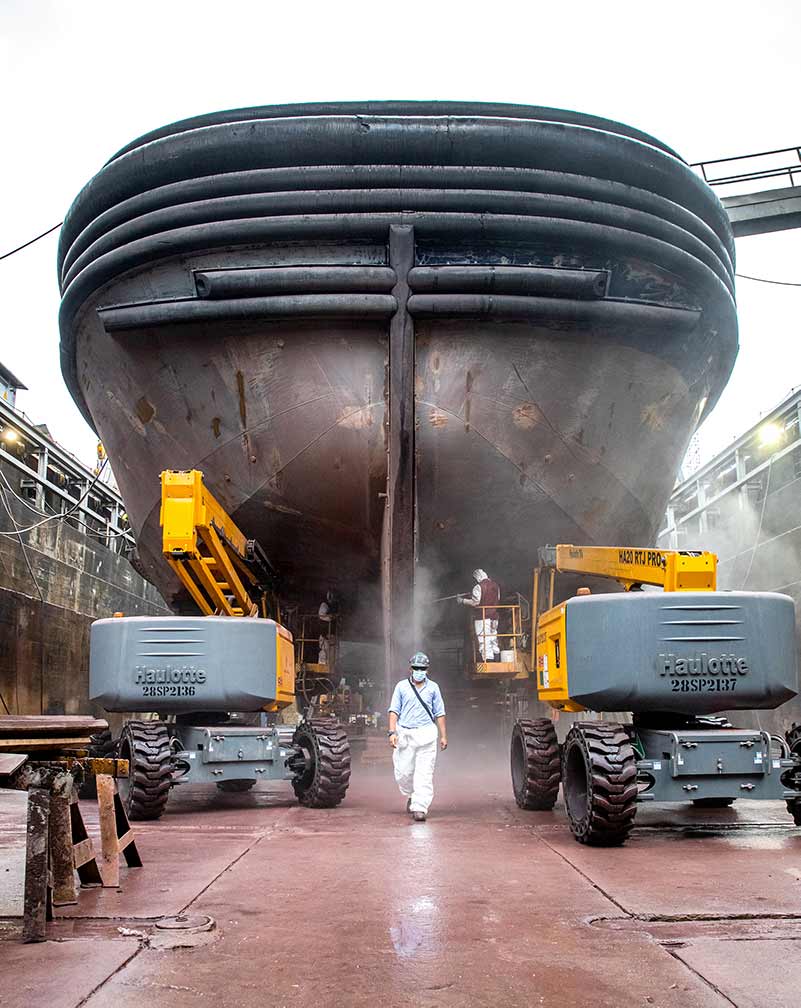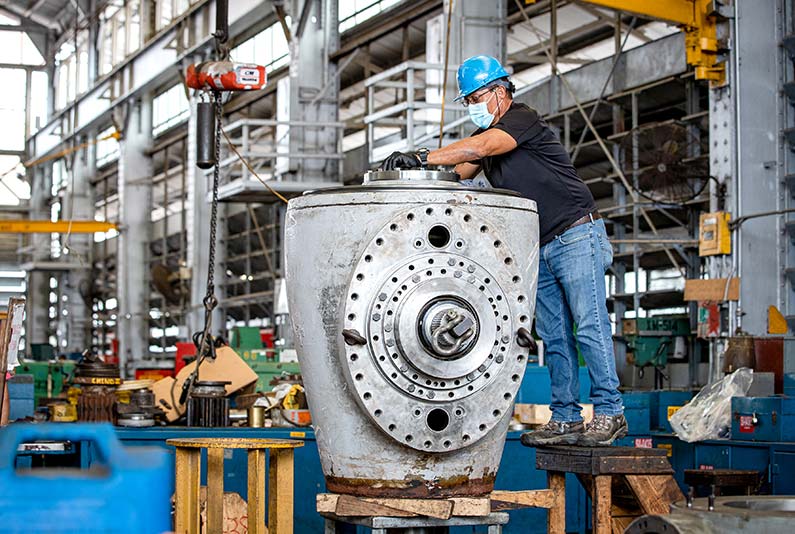Maintenance at the Panama Canal
That cloudy May morning in the province of Colon, at the dry dock of “La Industrial”, as the Canal’s Fleet […]
That cloudy May morning in the province of Colon, at the dry dock of “La Industrial”, as the Canal’s Fleet and Equipment Management and Maintenance Division is known, workers were preparing to enter a tugboat for major maintenance (or fairing) and engine maintenance, while others were absorbed in their work with three other vessels.
In naval terms, fairing is a set of works carried out on the hull of a vessel, which corresponds to the submerged part in the water, also known as the “live work” of the ship.
Due to the nature of the works, divers are involved in the first phase of securing the vessel to take it out of the water and lift it onto the rails of the synchro-lift, or to place it on the dry dock. Also involved were crane operators, riggers, welders, shipwrights, turner mechanics, painters and high-precision pipe fitters, among others.

In one of these tugboats, the Cerro Majagual, the works include adjustments for Fifi-1 (Fire fighting) category certification, that is, to equip it with two fire monitors and minimum volumetric capacities in terms of firefighting discharges in cubic meters per hour. This is a requirement imposed from the entry into operation of the expanded Canal, in June 2016, due to the growing increase in the transit of ships carrying liquefied natural gas (LNG).
“As a result of the expanded Canal and our customers sailing with their products, especially LNG, six Fifi-1 category tugboats were acquired among the 14 in the latest generation fleet. Later, we realized that we needed more tugboats with that category, so we are now fitting two with that requirement. One, the tug Cerro Azul, has already been upgraded, while the Cerro Majagual is in the process of being upgraded. We now have eight Fifi-1 category tugboats,”
José Luis Ramírez, manager of the Fleet and Equipment Management and Maintenance division.
When to perform a fairing and machine maintenance?
Canal tugboats require fairing or major maintenance every 5, 7 or 10 years, depending on the type of equipment. In the case of newer tugboats, such as the fleet of 14 acquired for the operation of the expanded Canal, they enter the dry dock every seven years, and Ramirez explains that it is possible to request an extension of the maintenance date up to six months, if necessary.
Once the work has begun, the vessel can remain between six to eight weeks in the dry dock, or 12 weeks, if there is greater deterioration.

As for the ordinary maintenance of the machine, it is specified to be done every 1,000, 3,000 and 5,000 hours of service, and eventually the tugboat requires a major overhaul, which for the new generation of Canal tugboats is done every 40,000 hours.
“However, as a result of the previous 40,000-hour exercises we have done, and the recommendation of both the machine chiefs on board and the workshop personnel, we have realized that the parts we are removing and replacing according to the manufacturer’s specifications are in very good condition. So this is the second tug in the fleet of the newest ones to which we are performing the 40,000-hour machine maintenance and, after a review of the parts and all the components replaced, we have evaluated taking this procedure to a time greater than 40,000 hours”, says Ramírez.
Additionally, the Fleet and Equipment Management and Maintenance division, in conjunction with the Tug Maintenance section of the Transit Resources Division, is evaluating the extension of the major overhaul of these engines through periodic inspections and the recommendations established in a maintenance program modified by GE (General Electric) Transportation that the engines of these tugboats can be carried out according to fuel consumption, and not only by service time, and that this can vary between 40,000 to 60,000 hours.
Stranded ship does not pay freight?
While talking to El Faro, Ramirez, almost guessing our next logical question, continues to say that the Panama Canal tug fleet totals 46 vessels, and that the transit service requires 36 to serve the ships. Thus, there are 8 vessels that can be between standing by (waiting) for any call for assistance, and in maintenance, so as not to interfere with the operation of the waterway. In other words, the old saying “stranded ship does not pay freight” does not apply here, because the Canal cannot afford that luxury.